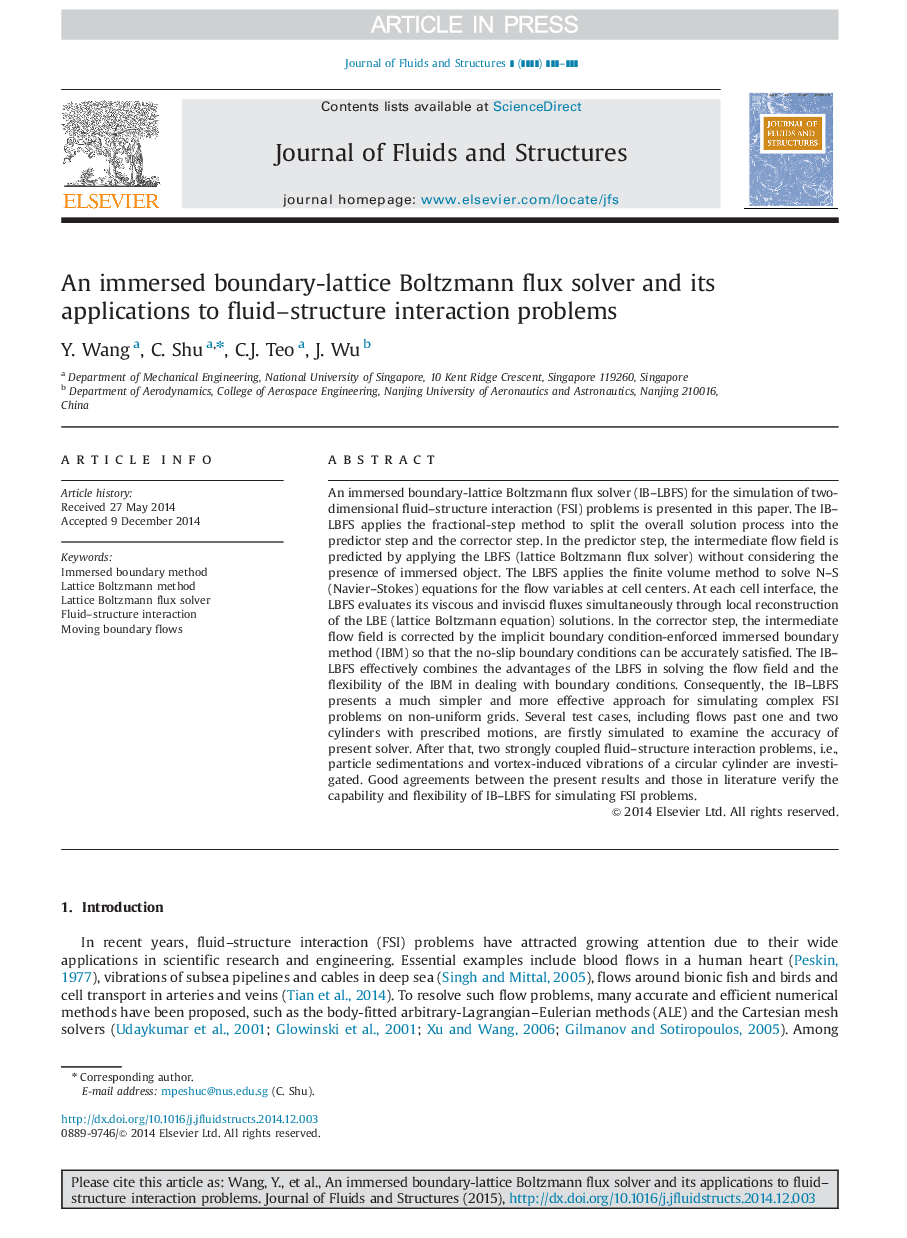| Article ID | Journal | Published Year | Pages | File Type |
|---|---|---|---|---|
| 7175976 | Journal of Fluids and Structures | 2015 | 26 Pages |
Abstract
An immersed boundary-lattice Boltzmann flux solver (IB-LBFS) for the simulation of two-dimensional fluid-structure interaction (FSI) problems is presented in this paper. The IB-LBFS applies the fractional-step method to split the overall solution process into the predictor step and the corrector step. In the predictor step, the intermediate flow field is predicted by applying the LBFS (lattice Boltzmann flux solver) without considering the presence of immersed object. The LBFS applies the finite volume method to solve N-S (Navier-Stokes) equations for the flow variables at cell centers. At each cell interface, the LBFS evaluates its viscous and inviscid fluxes simultaneously through local reconstruction of the LBE (lattice Boltzmann equation) solutions. In the corrector step, the intermediate flow field is corrected by the implicit boundary condition-enforced immersed boundary method (IBM) so that the no-slip boundary conditions can be accurately satisfied. The IB-LBFS effectively combines the advantages of the LBFS in solving the flow field and the flexibility of the IBM in dealing with boundary conditions. Consequently, the IB-LBFS presents a much simpler and more effective approach for simulating complex FSI problems on non-uniform grids. Several test cases, including flows past one and two cylinders with prescribed motions, are firstly simulated to examine the accuracy of present solver. After that, two strongly coupled fluid-structure interaction problems, i.e., particle sedimentations and vortex-induced vibrations of a circular cylinder are investigated. Good agreements between the present results and those in literature verify the capability and flexibility of IB-LBFS for simulating FSI problems.
Keywords
Related Topics
Physical Sciences and Engineering
Engineering
Mechanical Engineering
Authors
Y. Wang, C. Shu, C.J. Teo, J. Wu,
